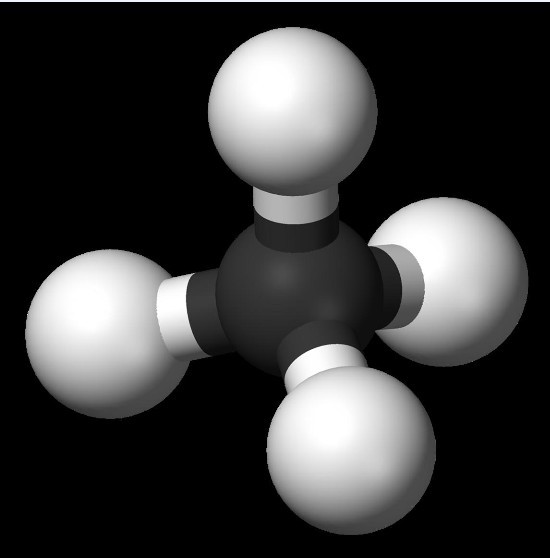(单词翻译:单击)
听力文本
This is Scientific American — 60-Second Science. I'm Christopher Intagliata.
The first life on Earth appeared about four billion years ago. One place these pioneering organisms may have emerged is at hydrothermal vents, deep underwater. Where unusual chemistry provided energy for primitive life-forms to survive. Life-forms like the methane-belching microbes found at the vents today.
Now, for the first time, researchers have found evidence of methane-producing life in similarly extreme conditions, but at the surface of the Earth — at a spring in northern California, called The Cedars. The water there is extremely basic — with a pH of 11.6. And it contains no oxygen. Not an easy place to survive.
Researchers tested water and sediment at the Cedars. Some samples got dosed with mercuric chloride to kill any life present. Those dosed samples produced no methane. But the samples in which microbes were allowed to survive did put out methane. Confirming that at least some of the methane at the springs is indeed biological in origin. The findings appear in the Journal of Geophysical Research: Biogeosciences.

The finding has implications for climate change alleviation. A geologically similar spring in Oman has been proposed as a site for carbon storage—pumping CO2 underground, where it gets incorporated in stone. But the extremophiles at The Cedars can use CO2 to make methane—an even more potent greenhouse gas. "So imagine pumping CO2 into the ground and having it come back up as methane." Penny Morrill, a biogeochemist at Memorial University of Newfoundland. "This will not necessarily happen, but it is something to be tested for before fully implementing a carbon capture and storage technology at one of these types of sites."
Morrill says the study's also a reminder that life is tenacious. "We should not let our biases prevent us from looking for evidence of life in what we would otherwise consider an unexpected place." Including other planets and moons.
Thanks for listening Scientific American - 60-Second Science Science. I'm Christopher Intagliata.
参考译文
这里是科学美国人——60秒科学。我是克里斯托弗·因塔利亚塔。
地球上的第一个生命出现在约40亿年以前。这些先驱生物出现的其中一个地方是深海热泉和深海。那里不寻常的化学物质为原始生命形态提供了生存下去的能量。现在深海热泉发现了能喷射甲烷的微生物。
研究人员首次发现了能产生甲烷的生物生活在类似极端环境的证据,而这个地方位于地球表面,那就是加利福尼亚州北部的雪松泉。这里的水很普通,酸碱值为11.6。但是水里没有氧气。这可不是一个容易生存的地方。
研究人员对雪松泉里的水和沉积物进行了检测。一些样本里含有氯化汞,可以致死任何生命。这类样本不能产生甲烷。而可以让微生物生存的样本会释放出甲烷。这表明,至少该泉水里的一些甲烷的确是生物起源。这一发现刊登在《地球物理学研究杂志:生物地球科学》上。
这一研究对减缓气候变化有启示意义。安曼一处具有类似地质的泉水被推荐作为碳储存地,输送被注入地下岩石储存的二氧化碳。但是雪松泉的极端微生物可以利用二氧化碳制造甲烷,甲烷是一种更强的温室气体。“想象一下,将二氧化碳输送至地下,然后再把它变成甲烷。”纽芬兰纪念大学的生物化学家佩妮·莫里尔表示,“这不一定会发生,但是这是在这类地方完全实现碳捕捉和储存技术之前要进行的测试。”
莫里尔表示,这项研究还提醒人们生命是顽强的。“我们不应该因为偏见而停止在意想不到的地方寻找生命证据的脚步”。这些地方包括其他星球和月球。
谢谢大家收听科学美国人——60秒科学。我是克里斯托弗·因塔利亚塔。
译文为可可英语翻译,未经授权请勿转载!
重点讲解
重点讲解:
1. for the first time 首次;第一次;
例句:For the first time luck hooked onto me.
运气第一次降临到我头上。
2. at least 至少,起码;
例句:At least this second meeting had helped to thaw the atmosphere.
这第二次会议至少起到了缓和气氛的作用。
3. prevent sb. from doing sth. 阻止;制止;阻碍;
例句:Cotton mittens will prevent the baby from scratching his own face.
棉的连指手套使婴儿不会抓伤自己的脸。
4. look for 寻找,寻求,谋求(解决方案或新的方法);
例句:The working group will be looking for practical solutions to the problems faced by doctors.
工作小组将寻求切实可行的方案,以解决医生们遇到的难题。


